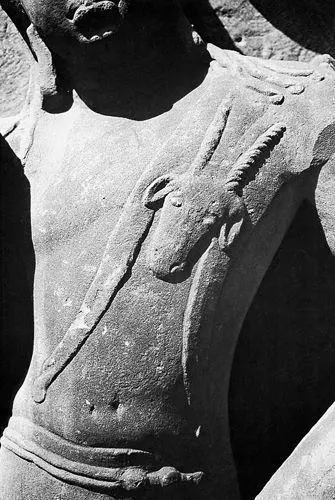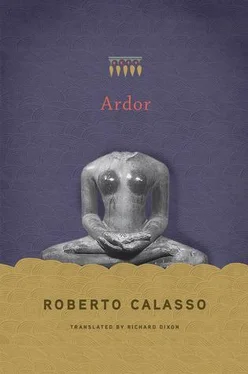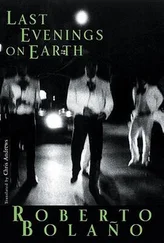* * *
The figure of the renouncer indicates the path by which a highly detailed ceremonial practice could become invisible, transforming itself into an act of knowledge. The saṃnyāsin , thus, no longer kept fires, and withdrew from the community into the forest. Yet remaining a sacrificer, indeed enhancing this aspect of his character.
Several thousand years later, with whom would we now associate this figure? With all those who are driven by a powerful urge — they often prefer not to call it duty, but it is certainly something they feel obliged to do for someone, someone they may never know — and they concentrate their energies on some form of composition, which in turn is offered to someone unknown. They are the artists, those who study. They all find the origin and purpose of what they do in the practice of their art, in their studies. They are Flaubert, who roars in the solitude of his room at Croisset. Without asking for what reason and for what purpose. But absorbed in working out ardor, tapas , in a form.
“Mobile are the waters, mobile the sun, mobile the moon and mobile the stars; and, as if these divinities did not move and act, so will be the brahmin on that day when he does not study.” Study is that which assures movement, which makes it possible to respond to the ceaseless activities of the divinities in the sky and on the earth. It is the closest approximation in defining that which is living, that which overcomes inertia. Study can also be reduced to reciting its smallest unit — one verse of the Ṛgveda or one ritual formula. That is enough for the thread of the vow not to be broken, to ensure “the continuity of the vow, vrata .”
* * *
There is a subtle distinction between renunciation and detachment. To accept the life of the renouncer means following an āśrama , a stage of life like the three that have preceded it. And each stage brings its own guilt and restrictions. “Detachment,” tyāga , is something else — a mental attitude that can pertain to any stage of life. Simone Weil is extremely clear on this point: “Detachment and renouncement: often synonyms in Sanskrit, but not in the Gītā : here ‘renouncement’ ( saṃnyāsa ) is the lower form that consists of becoming a hermit, sitting beneath a tree and moving no further. ‘Detachment’ ( tyāga ) is making use of this world as if not using it.”
Nothing actually left it and nothing entered from anywhere — there was indeed nothing else — and it [this all, tónde tòn ólon] nurtured itself procuring its own destruction, whereas all that it suffered and did in itself and by itself happened by art [ek téchnēs]. He who had created it felt indeed that it would have been better if it had been self-sufficient and not needy of anything else.
— Plato, Timaeus, 33 c — d

Even today, in some Indian airport lounges, we can find a billboard with the following words: “Lead me from nonbeing to being. Lead me from darkness to light. Lead me from death to immortality.” Tourists either ignore it or read it with satisfaction, as a sign of age-old Indian spirituality. What are these words? They were part of a series of ritual formulas recited during the soma sacrifice, called pavamānas. While a priest intoned a chant, the sacrificer pronounced those words in a low voice, as we can read them in the Bṛhadāraṇyaka Upaniṣad.
For the Upaniṣad the meaning of those words is clear: asat (unmanifest), tamas (darkness), mṛtyu (death) all mean “death” in the same way. It is assumed that every life in its raw state is an amalgam of nonbeing, darkness, and death. To leave it, we need help. And to get help, we need ritual.
* * *
Giving stability to the earth was the decisive action, whether it was the gods who achieved it, during their battle for supremacy over the Asuras, or whether it was Prajāpati himself, as the Taittirīya Brāhmaṇa says. What appears to us today as “the vast one ( pṛthivī ),” motionless and calm, was in the beginning a lotus leaf battered by the wind. That beginning is the state in which every person finds himself before the sacrifice begins. He is a confused being, wavering, at the mercy of unpredictable gusts of wind. He can find nothing to rest on. And so he has to imitate the action of the Devas: he will take some pebbles and place them around the edges of the area where he wishes to build fires. First of all to mark out, circumscribe (it is the same as the Greek concept of témenos ). And so the earth will become a “foundation,” pratiṣṭhā , for any action whatever, for any thought whatever.
In dealing with the gods, there is an etiquette that justifies certain activities, without which nothing would happen. One of these is fence making. If it is true that “the whole earth is divine” and that sacrifices can be performed on any part of it, it is also true that the part chosen can only become a place of sacrifice after it has been closed off from the rest. The same happens when a hut is built to shelter the sacrificer during the time of consecration. “Now the gods are segregated from men and that which is enclosed on every side is also secret: this is why they enclose it on every side.” What is the underlying assumption? “The gods do not speak with everyone,” and so a way has to be devised to approach them: men must segregate themselves in the same way as the gods are segregated from men. Then perhaps the gods will pay attention. This is what the consecrator must do, so that he “truly draws close to the gods and becomes one of the divinities.” An initial separation from other men is achieved through the preliminary actions of the rite. And it is only possible through this separation to establish a rapport with the gods. Secrecy, the need for secrecy, arose from the original segregation of the gods from men. The one who intends to break this secrecy (the sacrificer) must agree to segregate himself from everyone else. Secrecy is not a way of concealing something that would otherwise be obvious to all. Secrecy indicates that one is entering an area where everything, including meaning, is enclosed. The secret is the place cut off by the enclosure, as a picture by its frame.
* * *
One enters the ritual as if entering a circle in perpetual movement. A particular act is prescribed at each point and has to be carried out at the next point, until we get back to where we began. But where then is the beginning? There isn’t one. Existence, all existence, begins in debt to something else, first and foremost to life itself. Between ṛṇa , “debt,” and ṛta , “world order,” there is a restless wavering. Debt is born out of order, and is given back to order. Otherwise the balance of things would be upset, life could not continue. It is a process that takes place at every instant, the elaboration and exchange of a substance that can be called anna , “food,” but incorporates within it also the word, the thought, the gesture of offering, the “yielding,” tyāga , of the substance itself. But if there is no beginning, will there ever be an end? No — for every offering leaves a “residue,” ucchiṣṭa , and this residue sets off a further chain of acts. Nor must we think that the whole process relates only to man’s rapport with the gods. For the gods must also sacrifice, perform ritual acts in the devayajana , the “place of offering of the gods,” since they too have forebears, pūrve devāḥ , the “gods before.” The circulation of substance is not limited to the earth or to the “intermediate space,” antarikṣa , between earth and sky, but pervades the whole cosmos, as far as the “celestial ocean” that can be recognized in the Milky Way.
Читать дальше













